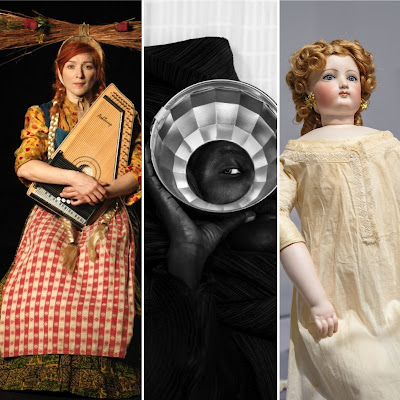ROUND-UP February 4-5, 2019
While this post has reviews from the beginning of February 2019, it also has a piece from the end of January that I missed when I was preparing my last round-up.
- "Suzanne Bocanegra: Poorly Watched Girls." this is tomorrow, January 30, 2019.
"The title ‘Poorly Watched Girls’ ultimately prompts questions of whether the codes and conventions of visual media allow girls and women to be anything but poorly watched. The most haunting work in the show, a multi-channel video projection called ‘Valley,’ draws upon the visible, but still fundamentally unseen pain and trauma of Judy Garland, whose delightful performing masked the abuse she faced at the hands of Hollywood film studios. Judy Garland was truly a ‘poorly watched girl.’ She was looked at and admired endlessly on the silver screen, but not really seen or understood, her sadness and sickness ignored for decades until her overdose at age 47."
- "“Little Ladies: Victorian Fashion Dolls and the Feminine Ideal” Needs More Than Just Beautiful Objects." Filthy Dreams, February 4, 2019.
"Little Ladies itself begins to digress thematically as you move through the space, leading to a sense of diminished returns. The impression left is that Little Ladies is a combination of, or even a compromise among, various ideas for displays and presentations that deal with different aspects of women’s lives during the Victorian era. It’s almost as if the dolls’ clothes themselves cease to be objects of study or focus in their own right, instead functioning as miniaturized examples of women’s fashions. The language in the wall texts slips from tying in the idea of dolls having wardrobes that match all situations that adult ladies could expect during their lifetimes—from dressing gowns to ensembles for social calls to mourning fashions—to slowly becoming more and more interested in explaining women’s fashions rather than the purpose of these dolls that are ostensibly the core of the show."
- "Zanele Muholi and The Women's Mobile Museum Exhibition Ask: Who is Art For?" Humble Arts Foundation, February 5, 2019.
"One of the more striking photographs in this series, still, immediately recalls the infamous portrait of Sharbat Gula with its subject’s fixed, entrancing stare depicted at a three-quarter view. However, still differs from the photo of Sharbat Gula in that its subject is also its creator, endowing the figure with the power to set the terms of the encounter with the viewer that does not exist in the photograph once known as Afghan Girl. still is very specifically afaq, a product of her choices and experiences in the world, whereas Afghan Girl was never meant to explore Sharbat Gula’s interiority, but to provide a useful, eye-catching avatar of refugee women and children."

Comments
Post a Comment